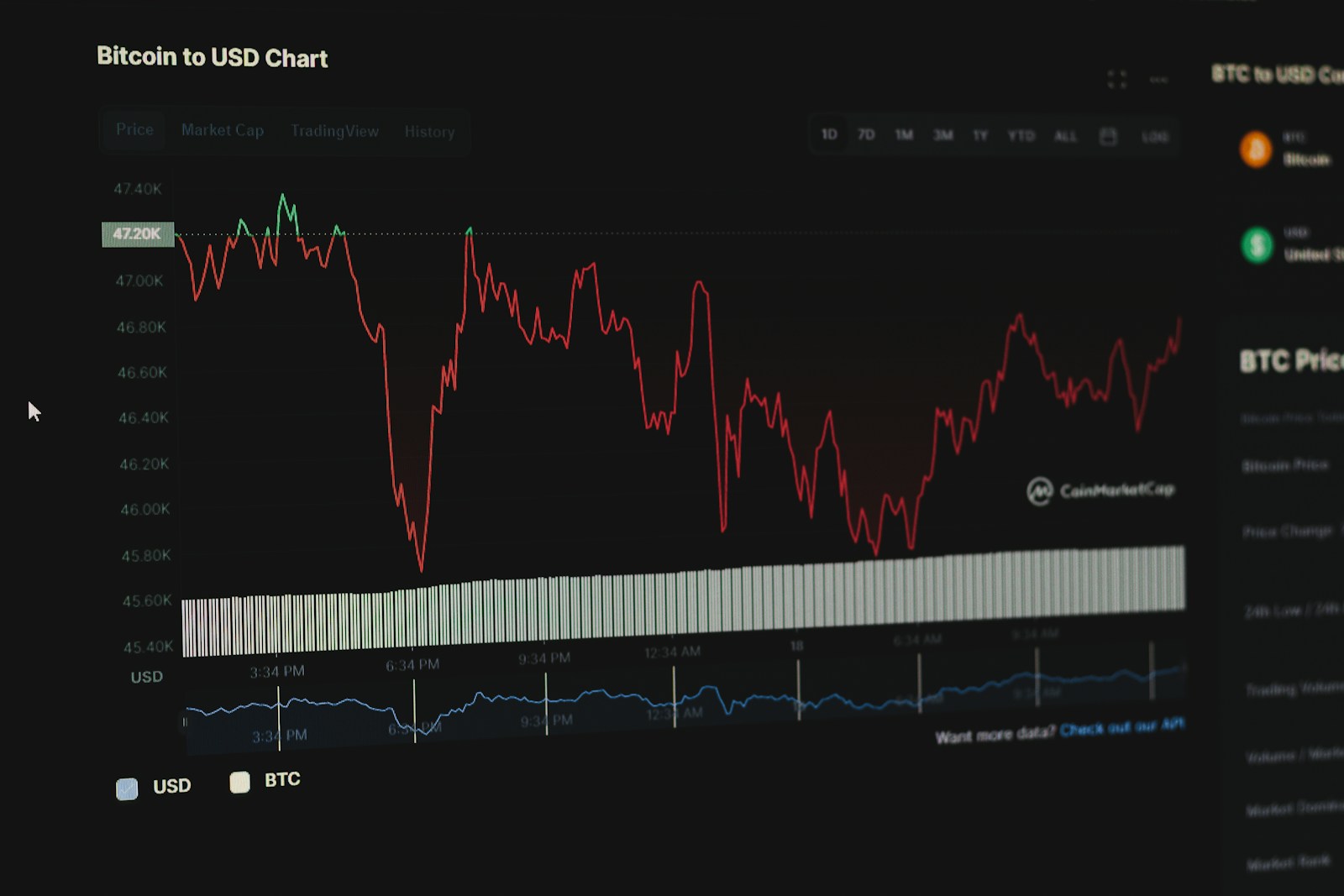
Tracking the volume of daily transactions provides a direct lens into system activity. For example, Ethereum’s average transactions per day hovered around 1.2 million in early 2024, signaling robust user engagement despite recent market volatility. Monitoring this figure alongside transaction fees offers insight into network congestion and user demand patterns, reflecting operational status more reliably than price alone.
Active addresses reveal participant behavior and ecosystem vitality. A rise in unique active addresses over a sustained period often correlates with increasing adoption or renewed interest from developers and users alike. In contrast, declining active address counts can indicate stagnation or reduced utility. Comparing Bitcoin’s roughly 900,000 daily active addresses to other chains highlights differences in decentralization and user base diversity.
Beyond raw counts, examining transaction types enriches understanding of underlying trends. Differentiating between simple value transfers, smart contract interactions, and token swaps enables clearer interpretation of network use cases. This layered view helps detect shifts in functional health – for instance, whether DeFi protocols gain traction or NFT activity spikes during specific periods.
Integrating these indicators into a composite score facilitates timely assessment of system resilience. Such an index can alert stakeholders to early signs of stress like sudden drops in throughput or spikes in failed transactions. Recent incidents on Solana demonstrated how transaction failure rates surged above 10% during outages, underscoring the value of continuous monitoring for operational stability and trust maintenance.
Ultimately, leveraging transactional data and address activity creates a quantitative foundation for evaluating platform robustness. This approach empowers analysts to make informed decisions amidst fluctuating market conditions and evolving protocol upgrades. Are current metrics capturing enough nuance to predict future performance? Ongoing refinement remains key as ecosystems grow increasingly complex.
Network analysis: measuring blockchain health metrics [Market Analysis]
Monitoring on-chain indicators such as transaction throughput and the count of active addresses provides a direct window into the operational vitality of decentralized ledgers. For example, Ethereum’s daily transactions peaked above 1.3 million in early 2024, reflecting robust user engagement despite fluctuating gas fees. Tracking these figures over time enables detection of shifts in usage patterns that might signal either growing adoption or emerging bottlenecks within the system.
Equally important is evaluating the number of unique wallet addresses interacting regularly with the protocol. A sustained rise in active accounts often correlates with network expansion and increased utility. Conversely, a sharp decline may indicate waning interest or migration to alternative platforms. In Bitcoin’s case, active addresses hovered around 1 million per day during Q1 2024, consistent with steady demand for peer-to-peer value transfers amid macroeconomic uncertainty.
Key indicators shaping ledger robustness
Transaction volume alone doesn’t capture full ecosystem dynamics; incorporating additional parameters like average transaction size and fee rates offers deeper insight. For instance, elevated average fees can deter smaller trades, skewing user behavior and potentially reducing overall activity. The Binance Smart Chain recently experienced fee surges surpassing $0.50 per transaction during congestion events, which temporarily suppressed micro-transactions yet maintained high-value transfer levels.
The ratio of newly created addresses to dormant ones also serves as a proxy for engagement sustainability. A higher influx of fresh participants relative to inactive accounts suggests expanding network reach and adoption momentum. Conversely, stagnation or contraction implies plateauing interest or competitive displacement by rival protocols offering superior scalability or features.
Analysis of token movement velocity further enriches understanding of transactional fluidity within ecosystems. Rapid circulation indicates active economic interaction rather than simple accumulation or hodling behavior. Case studies such as Solana demonstrate how spikes in token velocity often align with DeFi activity surges and NFT market booms, acting as early indicators for ecosystem vibrancy beyond mere user counts.
Finally, integrating cross-chain activity metrics reveals shifting capital flows and interoperability trends shaping decentralized finance landscapes today. Increasing bridge traffic between Ethereum and Layer-2 solutions reflects strategic migration aimed at balancing cost efficiency against security guarantees. This multidimensional evaluation framework allows market participants to anticipate shifts in value distribution across interconnected networks more precisely than traditional volume-based assessments alone.
On-chain activity indicators
Monitoring the volume and frequency of transactions provides immediate insight into the vitality of a distributed ledger. For example, Ethereum consistently processes over 1 million daily transactions, reflecting substantial user engagement and application deployment. Sharp drops in transaction counts can signal network congestion or declining user interest, while sustained increases often correspond to heightened demand or new protocol upgrades.
The count of active addresses serves as another pivotal indicator. Active addresses represent unique participants engaging in transfers during a specific timeframe, typically 24 hours or a week. Bitcoin’s active address numbers hovered around 900,000 daily in early 2024, suggesting persistent user involvement despite price fluctuations. Tracking these figures alongside transaction volumes helps distinguish between genuine growth and automated or spam activity.
Transaction value and complexity
Beyond sheer quantity, analyzing the average transaction value and complexity reveals deeper trends within the ecosystem. A rise in high-value transfers might indicate increased institutional participation or significant asset movements. Conversely, numerous low-value transactions could point to microtransactions or bot-driven interactions. For instance, recent spikes in Solana’s transaction counts were driven largely by NFT minting activities, characterized by many small-value operations rather than large token exchanges.
Address clustering techniques identify how many distinct entities control multiple addresses interacting on the ledger. This method refines activity assessments by filtering out exchanges or mixers that manage thousands of addresses but represent single actors. Such granular evaluation is critical when assessing decentralization levels and potential central points of failure within the system.
- Unspent Transaction Outputs (UTXOs): The UTXO set size indicates how fragmented or consolidated holdings are across users.
- Transaction fees: Rising fees often correlate with increased demand for block space but may deter smaller participants.
- Smart contract calls: Growth in contract interactions signals expanding use cases beyond simple transfers.
Combining these indicators with real-time data feeds enables dynamic snapshots of ecosystem robustness. During the 2023 Terra collapse aftermath, on-chain activity metrics showed rapid declines in both transactions and active addresses before partial recovery post-restructuring efforts. This case underscores how on-ledger signals anticipate broader market sentiment shifts ahead of price changes.
In conclusion, interpreting transactional behavior and participant engagement offers a multi-dimensional view of platform status. Regularly cross-referencing quantitative data like transfer counts with qualitative factors such as transaction types enhances forecasting accuracy for developers, investors, and regulators alike. What remains clear is that no single metric suffices; only integrated assessment captures true operational conditions at any given moment.
Transaction Throughput Evaluation
Evaluating throughput involves quantifying the number of transactions a ledger processes per second, which directly reflects its operational capacity. For instance, Ethereum currently handles around 15-30 TPS under standard conditions, while newer solutions like Solana report up to 65,000 TPS during peak loads. This disparity highlights the importance of considering transaction flow alongside factors such as network congestion and node performance when assessing system robustness. Monitoring active addresses participating in transactions provides additional context by indicating user engagement levels that influence throughput fluctuations.
Throughput assessment must integrate transaction confirmation times and block sizes to create a holistic understanding. Larger blocks enable processing more operations but may increase propagation delays and fork risks, as seen in Bitcoin Cash’s strategy versus Bitcoin Core. Concurrently, examining mempool size trends helps identify bottlenecks where unconfirmed transactions accumulate, signaling potential degradation in transactional efficiency. Incorporating these data points aids in pinpointing transient or systemic issues affecting transactional velocity and overall operational stability.
Quantitative Metrics and Practical Applications
The ratio of successful transactions to submitted ones within specific time intervals serves as a foundational metric for performance evaluation. For example, Binance Smart Chain maintains an average finalization time near 3 seconds with over 100 TPS sustained under normal traffic, demonstrating scalability improvements over legacy chains. Additionally, tracking the count of unique active wallets engaging daily offers insight into network activity intensity and demand-driven stress on processing capabilities. Combining throughput figures with such participation indicators enables more precise diagnostics of usage patterns impacting throughput sustainability.
Recent case studies illustrate how protocol upgrades can modify throughput dynamics significantly. Ethereum’s transition to Proof-of-Stake aimed to improve transaction efficiency by reducing resource consumption without compromising security; however, real-world gains in TPS remain moderate due to layer-2 adoption and sharding delays. Conversely, networks prioritizing throughput sometimes sacrifice decentralization or security aspects, raising questions about long-term viability versus short-term speed advantages. Thus, balancing these trade-offs requires ongoing observation of transactional volumes alongside ecosystem health signals embedded in address activity metrics and latency measurements.
Node Distribution Assessment
Assessing the dispersion of nodes across a decentralized platform is pivotal for determining its resilience and decentralization level. A widely distributed array of active nodes reduces the risk of network centralization, thereby enhancing security and fault tolerance. For instance, Ethereum currently reports over 9,000 active full nodes worldwide, with significant concentrations in North America and Europe. Monitoring the geographic and provider diversity among these nodes offers insights into potential vulnerabilities or censorship risks.
Quantitative evaluation involves tracking node counts alongside unique wallet addresses interacting within the ecosystem. An increase in distinct addresses coupled with stable or rising node numbers generally signals robust system participation. Conversely, a decline in active nodes–despite growing user addresses–might indicate over-reliance on centralized infrastructure providers, which can introduce single points of failure. Recent data from Bitcoin shows approximately 13,000 reachable nodes actively maintaining ledger copies; however, over 60% are hosted by just five cloud service providers.
The importance of measuring node uptime and synchronization status cannot be overstated. Nodes that frequently fall out of sync or experience downtime diminish overall platform reliability. Advanced platforms employ continuous monitoring to track metrics such as block propagation delay and peer connection stability. For example, Polkadot’s telemetry dashboard provides real-time snapshots indicating node responsiveness and message latency distribution across clusters. This level of granularity helps identify bottlenecks impacting transaction finality times.
Analyzing node client diversity further enriches the assessment process. Different implementations may possess varying degrees of vulnerability to bugs or exploits; hence reliance on a single client version could jeopardize network integrity. Bitcoin Core remains dominant with roughly 90% share among nodes but newer alternatives like Bitcoin Knots contribute to resilience by offering alternative software paths. Evaluating adoption rates assists stakeholders in understanding ecosystem robustness against potential consensus attacks.
- Geographic distribution: Prevents jurisdictional risks impacting majority of validators.
- Hosting diversity: Avoids concentration within few cloud providers or data centers.
- Client variety: Reduces systemic vulnerabilities linked to software bugs or exploits.
- Uptime consistency: Ensures high availability for transaction validation and block propagation.
Ultimately, maintaining an evenly spread population of active participants directly correlates with sustainable operational performance and trustworthiness. The ongoing shift towards incentivizing geographically dispersed nodes through staking rewards or governance participation reflects this understanding. As observed in networks like Tezos and Cardano, protocol upgrades often prioritize improving node accessibility and reducing hardware barriers to encourage broader involvement from smaller operators worldwide.
Market Sentiment Correlation: Final Insights
Monitoring active addresses alongside transaction volumes reveals a nuanced picture of the ecosystem’s vitality. Recent data shows that during periods of heightened market optimism, the number of unique sending and receiving addresses can surge by over 15%, indicating increased user engagement and speculative activity. Conversely, bearish phases often coincide with stagnant or declining address counts despite stable transaction rates, suggesting a consolidation among core participants rather than broad network expansion.
This relationship between sentiment indicators and on-chain activity provides an actionable framework for forecasting potential inflection points. For example, the 2023 Q1 rally was preceded by a consistent rise in both active addresses and average daily transactions, hinting at an underlying strengthening of participant confidence before price appreciation. Such patterns underscore the importance of integrating behavioral signals with transactional data to assess ecosystem robustness accurately.
Implications for Future Monitoring and Strategy
Incorporating multi-dimensional evaluative parameters–such as address churn rates, transaction value distribution, and cluster analysis of entity behaviors–can refine predictive accuracy beyond simple volume metrics. The emergence of more granular datasets allows analysts to discern whether increased activity stems from genuine network growth or transient speculation driven by external narratives.
- Address Activity: Tracking not only the count but also the longevity and reactivation frequency of wallet addresses improves understanding of sustained user involvement versus ephemeral spikes.
- Transaction Patterns: Evaluating average transaction size alongside total counts exposes shifts between retail-level participation and institutional flows, which often react differently to market cues.
- Sentiment Overlay: Layering social sentiment indices with on-chain signals enables earlier detection of momentum changes, allowing stakeholders to adjust risk exposure proactively.
The ongoing integration of off-chain analytics with intrinsic ledger data promises enhanced clarity in interpreting complex behavioral dynamics influencing asset valuations. Will future tools succeed in distinguishing meaningful engagement from noise? As market mechanisms evolve, so must our methodologies for evaluating systemic wellness through comprehensive interaction metrics embedded within transactional frameworks.







